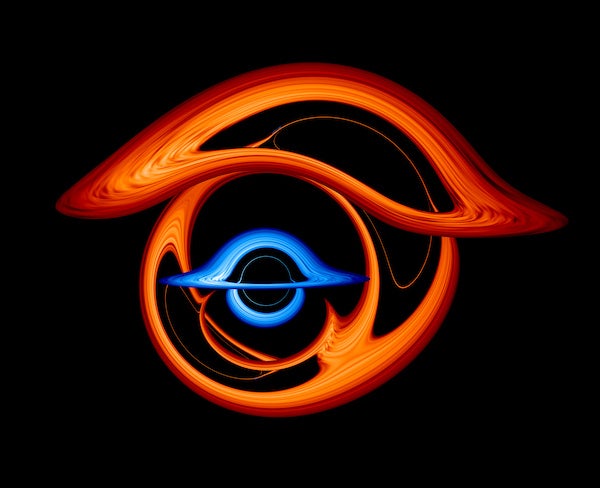
Why does the collision of supermassive black holes give off low-frequency gravitational waves compared to stellar-sized black hole collisions?
Tyler Belnap
Chicago, Illinois
Einstein’s theory of general relativity states that space and time are interwoven into a single continuum. The gravitational pull of massive celestial bodies like stars or black holes corresponds to distortions in this space-time fabric. Black holes cause extreme warping of space-time — they are objects that have so much gravitational pull, not even light can escape. The point of no return is called the event horizon.
There are two main classes of black holes (though astronomers suspect there are a few more categories). Smaller black holes that form from the deaths of massive stars or the mergers of stellar remnants are called stellar-mass black holes. This type weighs tens of solar masses to 100 solar masses. Supermassive black holes, on the other hand, live in the centers of galaxies and are millions to billions of times heavier than the Sun.
As pairs of black holes orbit one another, they produce ripples that propagate through the space-time fabric at the speed of light. These ripples are called gravitational waves. These waves carry away the system’s energy, causing the orbit to shrink. As a result, the black holes orbit faster and faster, increasing the frequency of the gravitational-wave signal.
Right before two black holes finally merge, their event horizons are touching. This is when the black holes are closest to each other and their orbit is fastest. Hence, this is when the maximum frequency of the waves will occur. The size of a black hole’s event horizon increases with its mass, so supermassive black holes have much larger event horizons than stellar-mass black holes. Therefore, supermassive black holes will be much farther apart than their stellar counterparts when their event horizons are touching. And, since the distance between two supermassive black holes is larger, the frequency of gravitational waves produced will be lower than in the case of two stellar-mass black holes.
Lisa Drummond
Graduate Student, MIT Kavli Institute for Astrophysics and Space Research, MIT, Cambridge, Massachusetts









